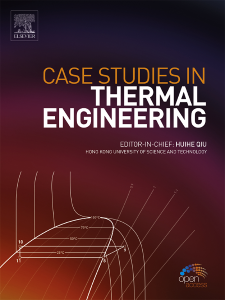孤岛开采工作面岩爆与煤炭自燃的复合灾害特征:案例研究
IF 6.4
2区 工程技术
Q1 THERMODYNAMICS
引用次数: 0
摘要
煤矿中的孤岛开采工作面经常会遇到应力集中和漏风严重的情况,从而增加了岩爆和煤层中残留煤炭自燃的风险。本研究以中国山东省某煤矿的 9305 采煤工作面为研究对象。利用煤炭自燃的特点以及整个开采过程中的微震和瓦斯监测数据,介绍了一种计算复合灾害下安全开采速度的新方法。对9305岛采面的安全开采速度进行了分层,提出了冲击自燃复合灾害长距离定向钻进综合防控技术。研究结果表明,考虑到煤层的自燃倾向,为减轻残煤自燃,安全开采速度应超过每天 3.7 米。考虑到煤层开采过程中微震事件的分布,在无保护采区,安全开采速度保持在每天 4.8 米以下,在保护区,安全开采速度上限为每天 8 米。通过对煤层自燃倾向性、冲击倾向性、煤层氧化至临界温度时间等因素的综合分析,岛式开采工作面的安全开采速度在非保护区为每天 3.7 米至 4.8 米,在保护区为每天 5.14 米至 8 米。拟采用的长距离定向钻进 "一孔多用 "方案可实现煤层开采前卸压、开采中注水、开采后注浆的综合治理。该方法可有效预防和控制岩爆和煤炭自燃的复合灾害,为煤炭资源的安全开采提供了创新的技术解决方案。本文章由计算机程序翻译,如有差异,请以英文原文为准。
Compound disaster characteristics of rock burst and coal spontaneous combustion in island mining face: A case study
The island mining face in coal mines often encounters stress concentration and significant air leakage, elevating the risk of rock burst and spontaneous combustion of residual coal in the goaf. This study centers on the investigation of the 9305 island mining face within a mine situated in Shandong Province, China. Leveraging the features of coal spontaneous combustion and data from microseismic and gas monitoring throughout the mining process, a novel method for calculating safe mining speeds under compound disasters is introduced. The safe mining speed of the 9305 island mining face is stratified, and a prevention and control technology integrating long distance directional drilling for impact-spontaneous combustion compound disasters is proposed. Findings suggest that to mitigate spontaneous combustion of residual coal, considering the seam's spontaneous combustion tendency, the safe mining speed should exceed 3.7 m per day. Accounting for the distribution of microseismic events during coal seam extraction, the safe mining speed is maintained below 4.8 m per day in the unprotected mining area and capped at 8 m per day in the protected zone. Through a comprehensive analysis considering coal seam spontaneous combustion tendency, impact tendency, and time to coal seam oxidation to critical temperature, the safe mining speed for the island mining face ranges from 3.7 m per day to 4.8 m per day in the unprotected area and from 5.14 m per day to 8 m per day in the protected area. The proposed long distance directional drilling 'one hole, multiple purposes' scheme enables an integrated approach encompassing pressure relief before coal seam extraction, water injection during mining, and grouting post-mining. This method effectively prevents and controls the compound disasters of rock burst and coal spontaneous combustion, presenting innovative technical solutions for the safe extraction of coal resources.
求助全文
通过发布文献求助,成功后即可免费获取论文全文。
去求助
来源期刊

Case Studies in Thermal Engineering
Chemical Engineering-Fluid Flow and Transfer Processes
CiteScore
8.60
自引率
11.80%
发文量
812
审稿时长
76 days
期刊介绍:
Case Studies in Thermal Engineering provides a forum for the rapid publication of short, structured Case Studies in Thermal Engineering and related Short Communications. It provides an essential compendium of case studies for researchers and practitioners in the field of thermal engineering and others who are interested in aspects of thermal engineering cases that could affect other engineering processes. The journal not only publishes new and novel case studies, but also provides a forum for the publication of high quality descriptions of classic thermal engineering problems. The scope of the journal includes case studies of thermal engineering problems in components, devices and systems using existing experimental and numerical techniques in the areas of mechanical, aerospace, chemical, medical, thermal management for electronics, heat exchangers, regeneration, solar thermal energy, thermal storage, building energy conservation, and power generation. Case studies of thermal problems in other areas will also be considered.
 求助内容:
求助内容: 应助结果提醒方式:
应助结果提醒方式:


